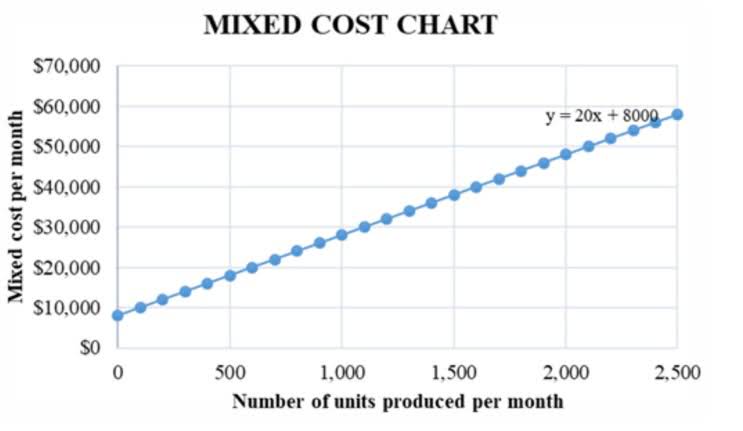
For a loss-making company, the diluted share count will reduce loss per share, since the net loss is being spread over a larger amount of shares. Many companies decide to do a stock split to make their stock more affordable for a broader range of investors and to improve liquidity. The float is the portion share outstanding formula of outstanding shares that’s most relevant for smaller investors. Other companies may explicitly list their outstanding shares as a line item in the equity section of their balance sheet. In the end, as the number of outstanding shares decreases by 1,000, the company’s EPS increases by 6.89%.

Join Over Half a Million Premium Members Receiving…
In addition, the figure is also listed in the capital section of a firm’s annual report (the Form 10-K filing). XYZ then buys back 100,000 shares at $10 per share, spending $1 million of its cash reserves. If the net income remains at $1 million, the new EPS would be approximately $1.11 ($1 million / 900,000 shares). This represents an 11% increase in EPS, solely due to the reduction in the number of shares outstanding. The variance between the two measures of EPS can signal the risk of future dilution and its possible effect on share value.
- Now, imagine you are one of the shareholders in XYZ that did not sell their shares as part of the buyback program.
- Authorized shares are the total number of shares a company can legally issue, while issued shares are the number the company has issued to date.
- These companies aggressively fund their growth by using convertible debt and paying employees with stock incentives.
- Importantly, the number of shares outstanding is dynamic and fluctuates over time.
- The outstanding stock is equal to the issued stock minus the treasury stock.
Related investing topics
The company hasn’t taken action yet; it’s just gotten approval to take action and sell some shares if it chooses to. As an example, let’s say that a fictional business, the Helpful Fool Company, has authorized 5,000 shares. There are a few reasons a company’s total common shares outstanding could change. Investors should also be wary when companies announce plans to buy back shares.

Supercharge your skills with Premium Templates
Authorized shares are the maximum number of shares a company can issue, as specified in its corporate charter. Outstanding shares are the shares that have been issued and are currently held by investors. Most notably, short interest usually is measured as a percentage of the float, rather than shares outstanding. This is because short sellers, when choosing to cover, can only buy the shares actually in the float. And so in theory (and often in practice), highly-shorted stocks with a low float present ripe conditions for a so-called “short squeeze”.
- Outstanding shares are the total number of shares issued by the company except the ones held in the company treasury.
- The term shares outstanding is defined as the total number of shares a company has issued to date, after subtracting the number of shares repurchased.
- The information contained in this article is for general purposes only and not a complete disclosure of every material fact.
- Dilution occurs when a company issues additional shares, reducing current investors’ proportional ownership in the company.
- Weighted average shares outstanding refers to the number of shares of a company calculated after adjusting for changes in the share capital over a reporting period.
If a company considers its stock to be undervalued, it has the option to institute a repurchase program. BofDs typically use the fully diluted or working-model calculation for planning and projecting. Another way for ownership to be projected is by measuring the issued and authorized stocks.
Why shares outstanding is useful

The company would be buying back outstanding shares to put in its treasury. The weighted average number of shares is determined by taking the number of outstanding shares and multiplying it by the percentage of the reporting period for which that number applies for each period. In other words, the formula takes the number of shares outstanding during each month weighted by the number of months that those shares were outstanding.
Implications of a Stock Split
This approach, called the « working model » calculation, forecasts potential changes in shareholder positions based on the total number of shares a company may issue, along with those already issued. It’s thus a speculative view of how ownership could evolve if the company fully uses its authorized share capital. It’s important all board members use the same calculation when making decisions or plans for the business to maintain consistency. The number of shares outstanding is equal to the total number of issued stocks minus the number of stocks held in the company’s treasury. From there, scroll down until you find the section in the 10-Q or 10-K called « Capital Stock. » All the details you need will be there. You’ll also see the various other stock categories, so don’t let that confuse you.
Issued Shares vs. Outstanding Shares
- Issued shares are the subset of authorized shares sold and held by the shareholders of a company, whether they are insiders, institutional investors, or the general public.
- Shares Outstanding represent all of the units of ownership issued by a company, excluding any shares repurchased by the issuer (i.e. treasury stock).
- The second line from the bottom indicates the number of shares outstanding at the end of each fiscal year, and the bottom line indicates how many new shares were issued by Apple in that year.
- Helpful Fool Company’s board has elected to issue just 2,000 shares at this time.
- Being a publicly traded company can bring extra scrutiny and increase accounting and other costs.Issuing more shares later also has disadvantages.
- The term « float » refers to the number of shares available to be traded by the public and excludes any shares held by company executives or the company’s treasury.
The information is also available on stock data websites like Stock Analysis. You can find shares outstanding at the top of a company’s 10-Q or 10-K filing. Evaluating the trend of this number provides useful insights to investors. Importantly, the number of shares outstanding is dynamic and fluctuates over time. When you buy stock in a company, you are buying an ownership stake, which is issued as a share of stock. Outstanding shares also help in understanding the market capitalisation or the value of the business.

